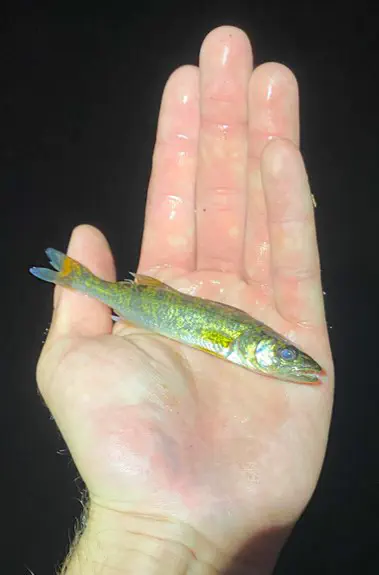Visual sensitivity, foraging behavior, and success of walleye (Sander vitreus) under ecologically relevant downwelling light conditions
 A young of the year walleye
A young of the year walleyeAbstract
Successful foraging of piscivores is often dependent upon light availability in their visual habitat and is often influenced by a number of abiotic and biotic factors. In north-temperate lakes, dissolved organic carbon concentrations vary greatly, thus likely influencing foraging success. To understand the impact this has on the walleye (Sander vitreus), we sought to study foraging success at various light intensities under physiologically relevant downwelling light conditions in a laboratory foraging arena. Using electroretinography to determine physiologically relevant light conditions in adult walleye, we found that fish exhibit broad spectral sensitivity that was greatest from 500 to 550 nm. Under optimal light conditions (525 nm), we next determined the reaction distance and foraging success of age-0 walleye at various light intensities. The average reaction distance of age-0 walleye increased rapidly from 12 cm in complete darkness to 27 cm at civil twilight (1 lx or 3.16 × 1013 photons m−2 s−1) and then plateaued, ranging from 28 to 30 cm at higher light intensities. Prey capture success of age-0 walleye was greatest under low light conditions, averaging 20.5% from nautical twilight to civil twilight at − 3° solar altitude (0.05–1 lx or 1.58 × 1011–3.16 × 1013 photons m−2 s−1) and declined to 10–12% as light intensity increased and in full darkness. Walleye may be best suited for environments with predominantly green downwelling light and age-0 foraging was most successful at nautical and civil twilight. In north-temperate lakes, dissolved organic carbon concentrations can fluctuate interannually due to climate change. Defining preferred juvenile walleye foraging conditions allows for predictions of climate change influences on walleye habitat and age-0 recruitment.